
The ESP32 and ESP8266 have gained immense popularity in the realm of IoT and embedded systems. Known for their affordability, robust connectivity, and versatility, these microcontroller boards are staples in various projects. However, developers often seek alternatives to address specific project requirements, including cost, power efficiency, or processing power. for a deeper review see Top 8 Popular Boards for IoT. This guide delves into the most popular ESP32 alternatives, comparing their features and use cases to help you make an informed decision. stay tune!
Why Consider an ESP32 Alternative?
The ESP32 microcontroller offers dual-core processing, built-in Wi-Fi, Bluetooth capabilities, and a wide array of GPIO pins, making it a versatile board for advanced IoT applications. However, in some scenarios, you may need alternatives that are better than ESP32 dev board in specific areas such as power efficiency, RF performance, or specialized AI acceleration:
- Lower Power Consumption: For ultra-low-power IoT devices, the ESP32 may not always be the best fit.
- Specialized Applications: Projects requiring specific features like advanced Bluetooth protocols or precise real-time control may benefit from other boards.
- Cost Optimization: While affordable, the ESP32 might not be the cheapest option for simpler tasks.
Let’s examine how the ESP32 stacks up against its closest competitors and analyze key factors like processing power, connectivity, and price.
Comparing ESP32 with Alternatives Table
| Feature | ESP32 | ESP8266 | Raspberry Pi Pico W | STM32 Blue Pill | Arduino Nano 33 IoT | nRF52 Series |
|---|---|---|---|---|---|---|
| Processor | Dual-core Xtensa | Single-core Xtensa | Dual-core ARM Cortex-M0+ | ARM Cortex-M3 | ARM Cortex-M0+ | ARM Cortex-M4 |
| Clock Speed | Up to 240 MHz | 80 MHz | 133 MHz | 72 MHz | 48 MHz | 64 MHz |
| Built-in Wi-Fi | Yes | Yes | Yes | No (requires module) | Yes | Yes |
| Built-in Bluetooth | Yes (v4.2/LE) | No | No | No | Yes (v4.2/LE) | Yes (v5.0/LE) |
| GPIO Pins | 34 | 17 | 26 | 37 | 14 | 48 |
| Power Consumption | Moderate | Low | Very Low | Low | Low | Very Low |
| Price Range | $6-$10 | $3-$6 | $10-$11 | $2-$5 | $21-$25 | $10-$20 |
| Best Use Case | Advanced IoT, robotics | Basic IoT, logging | Low-power IoT, education | Control systems, automation | IoT prototyping, monitoring | Wearables, low-power IoT |
Detailed Analysis of ESP32 Alternatives
1. ESP32 vs STM32 Blue Pill
The STM32 Blue Pill is a cost-effective option for projects requiring precise control systems, industrial automation, or real-time operations. While it lacks built-in Wi-Fi or Bluetooth, adding an external Wi-Fi module like the ESP01 can extend its capabilities.
-
Advantages of STM32 Blue Pill:
- Higher GPIO pin count (37 vs. 34 on ESP32).
- Extremely affordable, with prices starting as low as $2.
- Ideal for applications requiring low power and deterministic timing.
-
Limitations:
- No built-in connectivity.
- Requires additional components for IoT projects.
For developers weighing ESP32 vs STM32, the choice hinges on whether connectivity or precise control is the primary focus.
🛒 Check & Buy STM32F103C8T6 Development Board
2. ESP32 vs Arduino Nano 33 IoT
As an ESP32 alternative with Wi-Fi, the Arduino Nano provides seamless integration with Arduino’s ecosystem, making it a favorite for prototyping and educational projects. It includes built-in Wi-Fi and Bluetooth, making it an excellent option for IoT applications like environmental monitoring or smart home systems.
-
Advantages of Arduino Nano:
- Arduino IDE compatibility ensures a smooth development process.
- Built-in support for secure IoT protocols.
- Great for educational and beginner-friendly projects.
-
Drawbacks:
- Significantly higher cost compared to ESP32 ($21-$25).
- Lower clock speed and fewer GPIO pins.
In the ESP32 vs Arduino comparison, the Arduino Nano stands out for IoT-focused projects, while ESP32 excels in cost-effective automation.
3. ESP32 vs ESP8266
In an ESP32 comparison, The ESP8266 is a simpler, more affordable version of the ESP32, suitable for basic IoT projects. It features fewer GPIO pins and lacks Bluetooth functionality but remains a go-to choice for tasks like data logging and smart lighting.
-
Advantages of ESP8266:
- Extremely low cost, starting at just $3.
- Adequate for basic IoT applications.
-
Drawbacks:
- Lower processing power and fewer features compared to ESP32.
- Limited GPIO pins.
For projects requiring only basic connectivity, the ESP32 and ESP8266 offer a complementary pair, with the latter excelling in simpler setups. for an in-depth comparison see: Introduction and comparison of ESP32 and ESP8266.

4. ESP32 vs Raspberry Pi Pico W
As another ESP32 alternative with Wi-Fi, the Raspberry Pi Pico W is a recent addition to the world of microcontrollers, offering dual-core processing and low power consumption. While it doesn’t include Bluetooth, its built-in Wi-Fi and energy efficiency make it ideal for wearables and educational tools.
-
Advantages of Raspberry Pi Pico:
- Low power consumption and affordable pricing ($10-$11).
- Backed by a strong community and extensive documentation.
-
Drawbacks:
- No Bluetooth support.
- Fewer GPIO pins than ESP32.
When comparing ESP32 vs Raspberry Pi Pico, the Pico W is a strong contender for low-power projects.
🛒 See and Buy Raspberry Boards
5. ESP32 vs nRF52 Series
The nRF52 Series microcontrollers are renowned for their ultra-low power consumption and advanced Bluetooth 5.0 and Wifi support. These features make them perfect for wearables, healthcare devices, and other battery-sensitive applications.
-
Advantages of nRF52 Series:
- Industry-leading power efficiency.
- Superior Bluetooth connectivity (v5.0/LE).
-
Drawbacks:
- More expensive than ESP32 ($10-$20).
- Limited community support compared to ESP32.
In the comparison of Dual-core Xtensa in ESP32 vs ARM Cortex-M4 in nRF52, the ESP32 clearly targets higher performance, offering two Xtensa cores that handle multitasking, wireless stacks, and intensive IoT workloads simultaneously. This makes it suitable for applications like TinyML, audio processing, and real-time edge intelligence. In contrast, the nRF52’s ARM Cortex-M4 is a single, ultra–low-power core optimized for Bluetooth LE performance, deterministic timing, and energy-efficient sensing tasks. While the ESP32 delivers stronger raw compute power, the nRF52 excels in battery life, stability, and low-latency BLE communication, making each platform ideal for different classes of IoT designs.
🛒 Check & Buy NRF52832 Development Board
ESP32 and ESP8266: Where They Shine
The ESP32 and ESP8266 continue to dominate the IoT space due to their affordability and rich feature sets. From advanced robotics projects to basic IoT systems, these boards remain unmatched for most developers. However, when specific needs arise, such as ultra-low power consumption or advanced Bluetooth protocols, exploring alternatives becomes necessary.
Conclusion
The choice of a microcontroller board ultimately depends on your project’s unique requirements. While the ESP32 and ESP8266 are excellent all-rounders, esp32 competitors like the STM32 Blue Pill, Arduino Nano, Raspberry Pi Pico, and nRF52 Series excel in specialized scenarios. By understanding the strengths and limitations of each option, developers can select the best ESP32 replacement for their specific application needs.
Which board do you think is the best alternative to the ESP32? Share your thoughts in the comments below and let us know your experiences with these microcontrollers. Your feedback could help others make the right choice! 🙂
FAQ
-
What is the best ESP32 alternative for low-power IoT devices?
The nRF52 Series is ideal for low-power IoT applications due to its ultra-low power consumption and Bluetooth 5.0 support.
-
How does the ESP32 compare to the STM32 Blue Pill?
The ESP32 offers built-in Wi-Fi and Bluetooth, while the STM32 Blue Pill excels in cost-effective control systems with more GPIO pins.
-
Which ESP32 alternatives offer better ultra-low-power performance?
If your project depends on long battery life, microcontrollers like the nRF52 series or the STM32L family deliver significantly lower sleep-mode power consumption than the ESP32. These chips are ideal for wearables, sensors, and always-on devices requiring months or years of operation on a single battery.
-
Which ESP32 alternative provides the strongest community and ecosystem support?
While the ESP32 ecosystem is famously rich, the Raspberry Pi Pico W stands out as a top alternative thanks to its large global community, excellent documentation, and extensive MicroPython/C SDK resources, making troubleshooting, prototyping, and scaling projects faster and easier.
Related Articles:
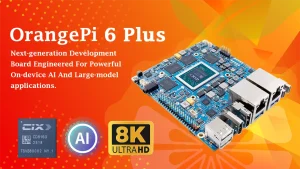
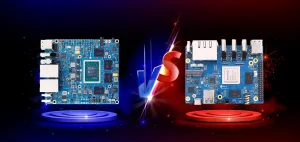
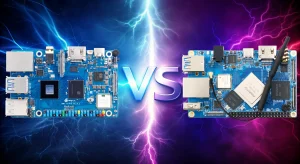
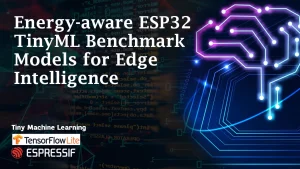
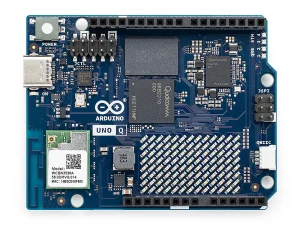
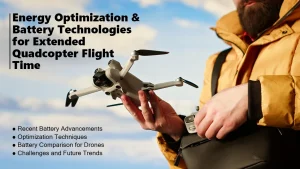

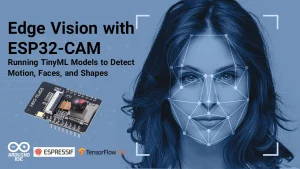
3 Responses